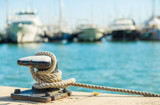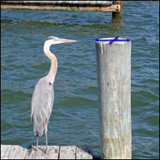
When it comes to owning a boat, there are a few important tasks to master, and knowing how to tie a sturdy knot is one of them. A typical square knot won’t suffice when the current begins to pull, waves get rough, and the dock starts to rock. Boat Lift Warehouse wants to ensure that every captain understands the proper and secure knots to use when anchoring the boat to the dock or the boat lift in any situation with these few key tips.
5 Basic Boating Knots:
- Bowline
- Cleat Hitch
- Clove Hitch
- Half-Hitch (also call the Overhand Knot)
- Figure Eight
Bowline Knot
With the bowline knot, you create a loop at the end of your line that is very easy to un-do when not in use, no matter the amount of tension or pulling the line has gone through. Having a loop at the end of your line can come in handy in many situations while boating such as securing a line to a piling or tying the bow of the boat to a dock.
Cleat Hitch Knot
Whether you are docking your boat for overnight storage in your boat lift or tying up to another boat, knowing how to secure your line to a cleat is one of the most important when boating. Cleats are everywhere in the marine world, and lines can come loose if not tied around the metal hitch correctly. The good news, this knot is extremely simple if you can do a figure 8 motion with your hands. Most anchors are tied using this method of knot tying as well, so knowing how to undo this tie is important.
Clove Hitch Knot
Clove hitch knots can be tied two different ways depending on what you are fastening the line too. When fastening to a rail or something that doesn’t have an opened end, you will tie the knot slightly differently than when linking up to a pole or post. Many boaters use this knot to keep coils of hanging line neat for storage or attaching bumpers from a bow rail.
Half Hitch (Overhand) Knot
A knot you may already be aware of how to tie, but might not know that it is used when boating, the half hitch or overhand knot is a very simple knot, yet not reliable all on their own. They can be used after another knot for reinforcement or to gather extra line.
Figure Eight Knot
Also known as the “stopper knot” the figure-eight knot is useful when you want your line to not pass through a hole or a pulley. While this knot is useful at times, it can be tricky to take out of your line after extreme stress or tension has been applied.
Above are just a few of the most common knots that Boatlift Warehouse wants its boaters to be aware of when tying any knot whether they be on the water, at their boat lift, or when docking their vessel. Continuing your knowledge of boating and ways of the water is important to be up to date.
Boat Lift Warehouse
Boat Lift Warehouse in Snow Hill, NC has been serving customers worldwide since 2004. We provide you with boat lifts, motors, parts, floating docks, and accessories, including a variety of dock lines, and we are dedicated to finding the right boat lift solution for you. Contact Boat Lift Warehouse today to learn more about the different docking lines we offer and purchase yours today!



